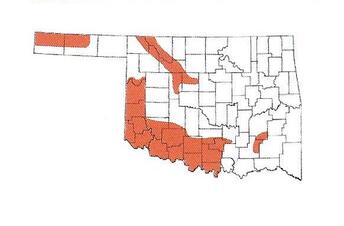Texas nightsnake
Hypsiglena jani texana
Hypsiglena jani texana
HARMLESS
Description:
This snake has a light tan body color with darker brown spots running down its back. It has smooth scales and a white belly with no markings. The neck will have elongated blotches on it, and they can number up to three, or as seen in these photos, they can be fused into one blotch that resembles a crown. There is a dark bar that runs behind each eye, and the snake has vertical pupils.
Size:
Adults 12 - 16 inches (31 - 41 cm)
Prey:
Small lizards and frogs
Reproduction:
Mates in spring and lays a clutch of 4 - 6 eggs that hatch during the summer months
Habitat:
Dry areas with sandy and rocky soil
Other Information:
This snake is rear-fanged, but uses its mildly toxic saliva to subdue its prey. It poses absolutely no threat to humans. As its name suggests, it's a nocturnal species that's rarely seen during the day. It spends that time hidden away under rocks and logs.
Why doesn't the range map show this species in my county?
Description:
This snake has a light tan body color with darker brown spots running down its back. It has smooth scales and a white belly with no markings. The neck will have elongated blotches on it, and they can number up to three, or as seen in these photos, they can be fused into one blotch that resembles a crown. There is a dark bar that runs behind each eye, and the snake has vertical pupils.
Size:
Adults 12 - 16 inches (31 - 41 cm)
Prey:
Small lizards and frogs
Reproduction:
Mates in spring and lays a clutch of 4 - 6 eggs that hatch during the summer months
Habitat:
Dry areas with sandy and rocky soil
Other Information:
This snake is rear-fanged, but uses its mildly toxic saliva to subdue its prey. It poses absolutely no threat to humans. As its name suggests, it's a nocturnal species that's rarely seen during the day. It spends that time hidden away under rocks and logs.
Why doesn't the range map show this species in my county?
